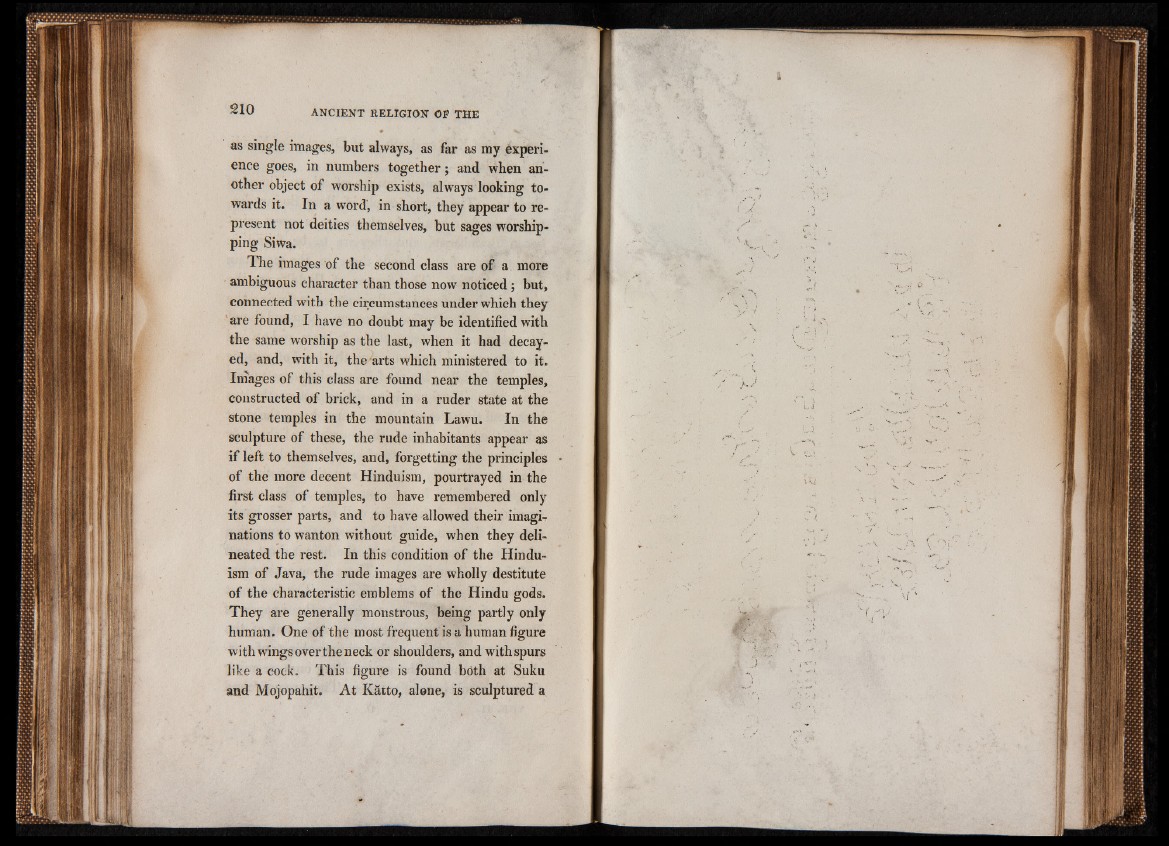
as single images, but always, as far as my Experience
goes, in numbers together; and when another
object of worship exists, always looking towards
it. In a word, in short, they appear to represent
not deities themselves, but sages worshipping
Siwa.
The images of the second class are of a more
ambiguous character than those now noticed; but,
connected with the circumstances under which they
are found, I have no doubt may be identified with
the same worship as the last, when it had decayed,
and, with it, the arts which ministered to it.
Images of this class are found near the temples,
constructed of brick, and in a ruder state at the
stone temples in the mountain Lawu. In the
sculpture of these, the rude inhabitants appear as
if left to themselves, and, forgetting the principles
of the more decent Hinduism, pourtrayed in the
first class of temples, to have remembered only
its grosser parts, and to have allowed their imaginations
to wanton without guide, when they delineated
the rest. In this condition of the Hinduism
of Java, the rude images are wholly destitute
of the characteristic emblems of the Hindu gods.
They are generally monstrous, being partly only
human. One of the most frequent is a human figure
with wings over the neck or shoulders, and with spurs
like a cock. This figure is found both at Suku
and Mojopahit. At Katto, alone, is sculptured a